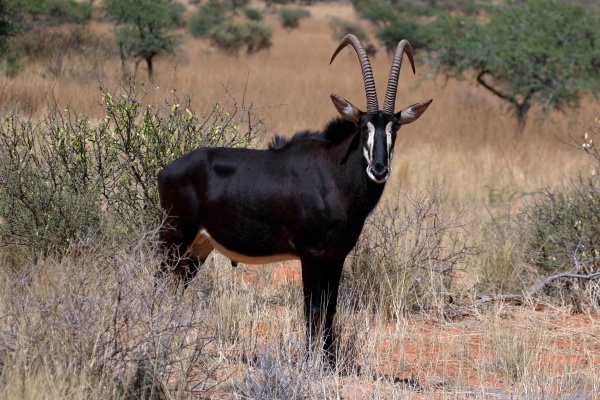Facts About Sable antelope
The sable antelope is a striking species inhabiting the wooded savannas of East and Southern Africa, ranging from Kenya to South Africa, with a distinct population in Angola. This majestic animal belongs to the genus Hippotragus and is part of the Bovidae family. There are four subspecies of sable antelope, each exhibiting unique traits and adaptations.
Physically, sable antelopes display sexual dimorphism, with males being larger and taller than females. They possess a robust build, thick necks, and tough skin, complemented by a mane along their neck and throat. Their coloration varies from chestnut to black, with females and juveniles generally presenting lighter hues. Both genders sport impressive ringed horns that gracefully curve backward.
These antelopes inhabit savanna woodlands and grasslands, where they graze on mid-length grasses, leaves, and occasionally minerals from salt licks or bones. Sable antelopes are diurnal, living in herds typically led by a dominant male. Males frequently engage in battles for dominance, and young males are eventually driven out of the herd. When threatened by predators such as lions, they employ their sharp horns for defense.
Unfortunately, the grassland habitats of sable antelopes are diminishing due to agricultural expansion. Nonetheless, they play vital roles in their ecosystems as grazers, browsers, and prey. The species is referred to by various names across different languages and regions.
Reproduction in sable antelopes is seasonal, with births typically coinciding with the rainy season. After a gestation period of about nine months, females give birth to a single calf. The calves are weaned at around eight months and reach sexual maturity at two to three years old. In the wild, sable antelopes can live up to 19 years, while in captivity, they can reach up to 22 years.
As herbivores, sable antelopes primarily feed on foliage, grasses, leaves, and herbs, utilizing their ruminant digestive system. They are most active during daylight hours. Notably, the giant sable antelope, one of the subspecies, is classified as Critically Endangered on the IUCN Red List and is listed on Appendix I of CITES, underscoring the urgent need for conservation efforts.

 Malawi
Malawi